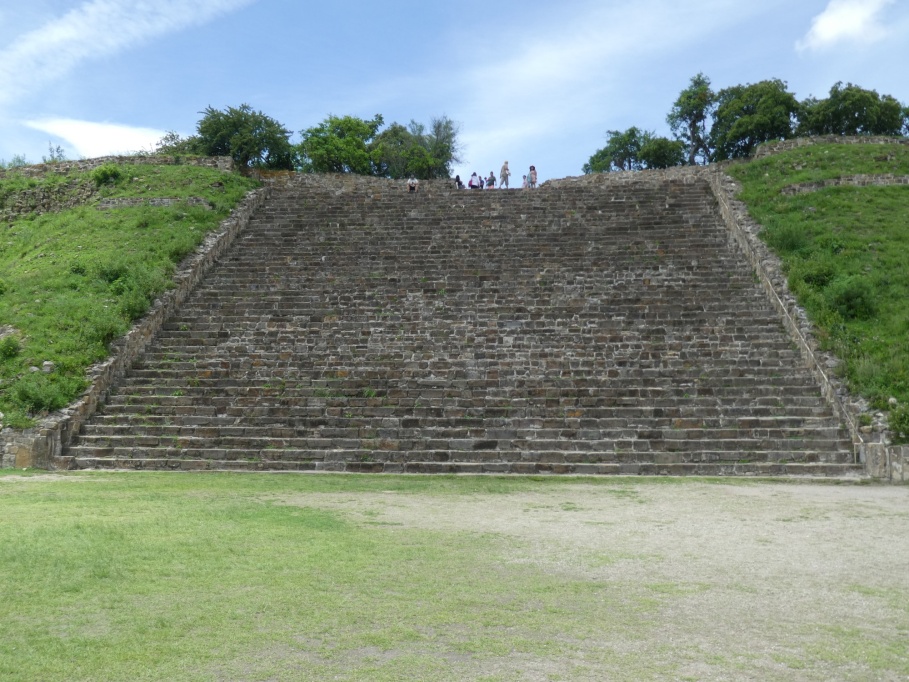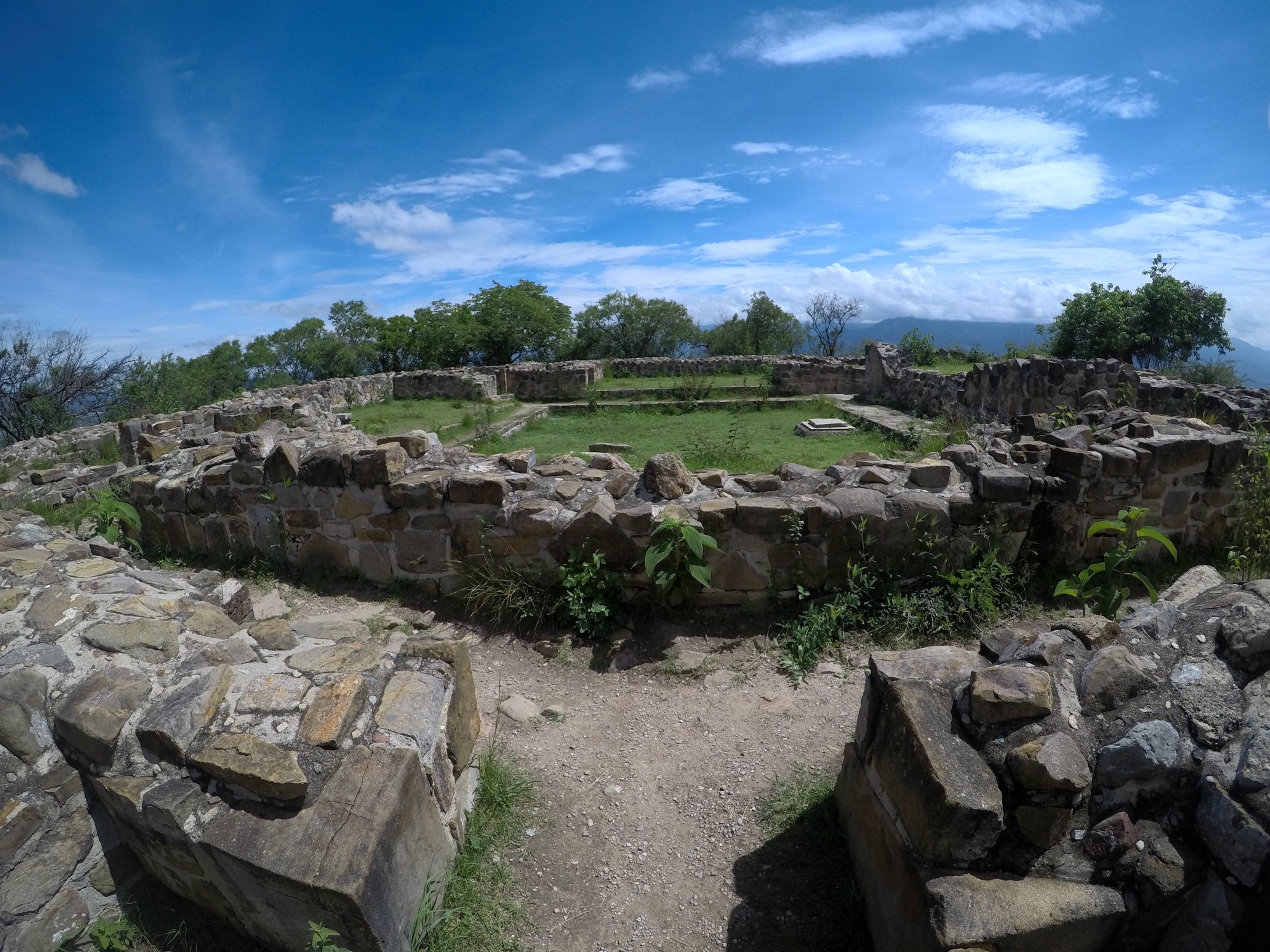Oaxaca Mexico Travel Guide A Vagabond Life
Oaxaca Mexico Travel Guide explores the southern mountain city of Oaxaca giving you the top things to see and do, how to get there and much more.
Oaxaca (pronounced HA-WA-CA) is in south-western Mexico and is the capital of the region of Oaxaca. The area has a diverse and very long history with evidence of human habitation dating back 11,000 years found in the nearby Guila Naquitz cave near the town of Mitla. Named a UNESCO World Heritage site is 2010 for having the earliest known evidence of domestic plants on the continent. By 2000 BC agriculture had been established in the area with corn, beans, chocolate, tomatoes, chillis, squash and gourds being grown for consumption. The diet remained the same until the Spanish conquest.
Zapotecs and Mixtecs lived in the central valley as far back as the 12th century. The Zapotecs gained dominance over the region with the centre of the people being Monte Alban which flourished from the years 500 BC to 750 AD . At its height of power Mount Alban had a population of 25,000 people.
In 1457 the Aztecs invaded and took rule, a rule that only lasted 30 years before the Spanish Conquest took place.
Lured by the promise of gold the Spanish lead by Hernan Cortes arrived in Mexico in 1519, within two year Cortes had over thrown the Aztec Empire. In Oaxaca the few natives who survived the invasion returned to remote villages and a substance lifestyle.
In Oaxaca beautiful homes were built in the Spanish colonial style for the Spaniards moving to Mexico which today make up the majority of buildings in the old centre of the town.
Today Oaxaca is a beautiful city that has a great deal to offer visitors. Discover this lovely city with the Oaxaca Mexico Travel Guide.
Oaxaca Mexico Map
Getting To Oaxaca Mexico
By Air
The easiest and most convenient way to reach Oaxaca is by air. Oaxaca International Airport (OAX), also known as Xoxocotlán International Airport, is located about 12 kilometers (7.5 miles) south of the city center. The airport serves both domestic and international flights, making it accessible from major cities across Mexico and some destinations in the United States. Upon arrival, you can take a taxi or an airport shuttle to reach your accommodation in the city.
By Bus
For those who prefer overland travel, Oaxaca is well-connected by bus services. The city’s main bus terminal, the Central de Autobuses de Segunda Clase (ADO station), offers regular services from Mexico City, Puebla, and other major cities. The journey from Mexico City to Oaxaca by bus typically takes around 6 to 7 hours, with comfortable options available through companies like ADO.
By Car
Driving to Oaxaca is another option, particularly if you’re coming from nearby states or plan to explore the surrounding region. The drive from Mexico City to Oaxaca takes about 5 to 6 hours via the MEX 150D highway. While the roads are generally in good condition, be prepared for some winding mountain routes as you approach Oaxaca.
Getting Around Oaxaca Mexico
By Foot
Oaxaca’s historic city center is compact and pedestrian-friendly, making walking the best way to explore its vibrant streets, markets, and attractions. Many of the city’s main sites, such as the Zócalo, Santo Domingo Church, and the Benito Juárez Market, are within walking distance of each other. Strolling through Oaxaca allows you to fully immerse yourself in the city’s atmosphere and discover hidden gems along the way.
By Taxi
Taxis are readily available in Oaxaca and are an affordable and convenient way to get around, especially if you’re traveling longer distances or prefer not to walk. Taxis in Oaxaca do not have meters, so it’s important to agree on a fare with the driver before starting your journey. Most short trips within the city center are reasonably priced, but it’s always a good idea to ask your hotel or a local for fare estimates.
By Bus
Oaxaca has a network of local buses and colectivos (shared taxis) that connect different parts of the city and surrounding areas. These are a budget-friendly option for getting around, though they can be a bit challenging for non-Spanish speakers or those unfamiliar with the routes. Buses are particularly useful for reaching neighborhoods outside the city center or for day trips to nearby attractions like Monte Albán.
By Tour Services
If you prefer a more organized experience, several tour operators in Oaxaca offer guided tours that include transportation to major attractions both within and outside the city. This is a great option for visiting sites like Hierve el Agua, the Tule Tree, or the nearby villages known for their artisan crafts, as these destinations can be difficult to reach independently.
Things To See & Do In Oaxaca Mexico
Catedral Santo Domingo de Guzmán


Museo de las Culturas Oaxaca Mexico
The Convent of San Pablo of Oaxaca joins the Templo de Santo Domingo de Guzman and served as a convent, it is a stunning buildings of soaring ceilings, arches, courtyards and fountains. Building commenced at the same time as the temple next door in 1551 and like the church took many years to complete. The convent was destroyed by earthquakes in 1603 and 1604 and rebuilt to the style that is seen today. Over the years the former convent has been a regional language centre, a military barracks, the Institute of Sciences and Arts, an hotel and a covered parking. It was rescued in 2006 and the restoration process began.
Today is a cultural museum showcasing artifacts from the region and documenting the history of the area. Posiibly the most important exhibition is that of the artistic objects discovered by in Tomb 7 of Monte Alban, belonging to the Mixtec Culture.
There is an entry fee to enter the museum.



Botanical Gardens of Oaxaca
The Oaxaca Botanical Gardens (Jardín Etnobotánico de Oaxaca) is a stunning and unique garden located in the heart of Oaxaca City, within the historic Santo Domingo Cultural Center. Covering more than 2.3 hectares, the garden showcases the rich biodiversity and cultural heritage of Oaxaca, one of Mexico’s most biologically diverse states.
What makes this garden particularly special is its focus on plants native to the Oaxaca region, many of which hold significant cultural and historical importance. The garden is a living museum, displaying a wide variety of cacti, agaves, and succulents, alongside trees like the majestic ceiba and the endemic Oaxacan pine. Each plant is carefully curated to illustrate its relationship with the indigenous cultures of Oaxaca, highlighting traditional uses in medicine, food, and rituals.
The garden’s design is as impressive as its plant collection. Landscaped by renowned artist Francisco Toledo and architect Luis Zárate, the garden integrates the natural beauty of the plants with the historical architecture of the former monastery. Visitors are guided through the garden by knowledgeable staff, offering insight into the deep connection between the region’s flora and its people.
A visit to the Oaxaca Botanical Gardens provides a serene escape and a deeper understanding of Oaxaca’s ecological and cultural richness.


Plaza de la Constitución (Zolcalo)
The Plaza de la Constitución, or Zócalo, originally planned in 1529 has be re designed many times over the years to arrive at what one see today, a shady oasis surrounded on two side by colonnaded arcades filled with restaurants and stores. The very impressive Oaxaca Cathedral – the Cathedral of Our Lady of the Assumption – sits at one end on the Zocalo and the Museo del Palacio ‘Espacio de Diversidad at the other.
The Oaxacan people love to gather in the square, sit in the shade, eat ice – cream and catch up with friends and family. Visit the Zocalo on a Sunday or any evening and you will find it busy with families enjoying their time off, street traders, visitors, entertainers and much more.


Markets of Oaxaca Mexico
Oaxaca markets are a vibrant experience full of local colour and life.
The three main markets in Oaxaca are;-
Mercado 20 de Noviembre (Market 20 November)
Famous for the Pasillo de Humo or Hall of Smoke which is a hall full of vendors BBQ’ing meat. Its is crowded, noisy with vendors spruiking their restaurants and as the name suggests full of smoke. It is also a delicious place to enjoy freshly cooked meats with accompanying salads and salsa. You will also find in Market 20 November numerous other food stall where you can sit and enjoy local dishes and very reasonable prices.
Mercado Benito Juarez
Named for Mexico’s indigenous Zapotec leader Benito Juarez (1806 -1872). This is the place to buy fresh fruit and vegetables, meat and poultry plus dried legumes chillis, herbs and so on. While here try the local delicacy of grasshoppers.
Mercado de Artesanias de Oaxaca – Artisans Market
Head to the Artisans Market for arts and crafts made by local and indigenous artists. Products available include hand embroidered clothing, hand crafts, pottery, art and much more.


Monte Alban Oaxaca Mexico
Monte Alban sits on a low mountian range over looking the city of Oaxaca in the Mexican central valley region. It is one of the most important archaeological zones in Mesoamericaca and one of the the most significant archeological site in the Oaxaca Valley
Founded by the Zapotec in the 6th century it grew to be their capital for thirteen centuries between 500 B.C and 800 A.D. As the Zapotec culture declined in the fourteenth century, areas of Mount Alban became occupied by the Mixtec peoples.
The site sits on over 6 square kilometres and includes impressive architectural remains that include the structures built around the Great Plaza, pyramids, terraces and platforms.
The first explorations and restorations of the archaeological zone started in 1938 by Alfonso Caso. It was Caso that discovered Tomb 7 which held one of the richest burial finds from pre-Columbian Mesoamerica ever found. Artifacts from tomdb 7 can be found in the Oaxaca Cultural Museum.
Monte Alban suffered severe damage in the 2017 earthquake with fifteen structures suffering structural collapse and many more needing emergency structural support.
The archaeological preservation of the site continues today.
How to get to Monte Alban Oaxaca
Guided Tour
There are numerous agencies located in Oaxaca who conduct guided tours, simply head to the Zocalo and find on of the agents who can talk you through the different options and costs.
Mini Van
If you prefer to wander the site without a tour you can take a mini van to and from Mount Alban. We used Lescas Tours who depart from their office in the Zocalo, drop you off at the site and collect you three hours later returning you to the Zocalo.
Taxi
You can get a taxi to the site, the downside is there is not always a taxi there when you want to return and we witnessed many people waiting for taxi’s when we were there.
What to Take To Monte Alban Oaxaca
It can get very hot at Monte Alan so it advisable to take water and a hat, there is a cafe with a stunning view of the valley where you can have a meal and a cold drink.







